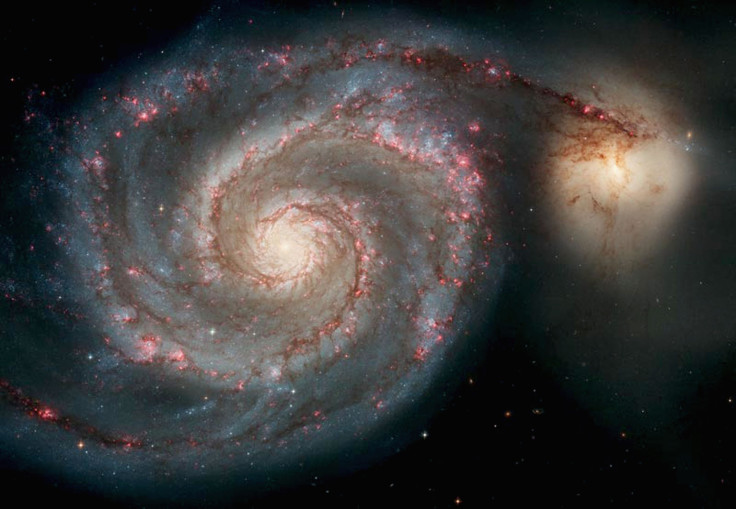Two Galaxies With Billions Of Stars Collide In Biggest Explosion Since Big Bang

For the first time, astronomers were able to capture a snapshot of two cluster galaxies on the verge of colliding with one another. They predicted that the collision would produce the largest explosion since the Big Bang and could provide a deeper understanding of how the universe was created.
For the study, the astronomers relied on three X-ray satellites from NASA, the European Space Agency and the Japan Aerospace Exploration Agency. Aside from the satellites, they also used two radio telescopes.
During their observation, they came across two cluster galaxies known as 1E 2216.0- 0401 and 1E 2215.7-0404 that are just about to collide with one another.
Cluster galaxies are the largest objects in space and can contain hundreds of galaxies and billions of star. They were able to reach their massive size through collisions. Scientists believe that ever since the Big Bang, galaxy clusters have been growing continuously by merging with one another.
The diameters of galaxies are believed to be millions of light years wide. Due to their immense sizes, the entire collision and merging process can take billions of years to complete. Since this can take an entire lifetime, the entire process can only be studied through snapshots of its various stages.
Through the new photograph taken by the astronomers, they were able to create a computer model showing the collision between the two cluster galaxies. According to them, the event would create a belt of gas that’s 100 million degrees hotter than the Sun.
“These clusters how the first clear evidence for this type of merger shock,” the study’s author Liyi Gu from Japan’s Riken research institute and the SRON Netherlands Institute for Space Research said in a statement.
“The shock created a hot belt region of 100-million-degree gas between the clusters, which is expected to extend up to, or even go beyond the boundary of the giant clusters,” Gu added. “Therefore the observed shock has a huge impact on the evolution of galaxy clusters and large scale structures.”
According to the astronomers, their computer model as well as follow-up studies on the two cluster galaxies will be able to provide a better idea of how these massive cosmic bodies are formed.
The details of their findings were published in a new study in the online journal Nature Astronomy.
© Copyright IBTimes 2025. All rights reserved.





















